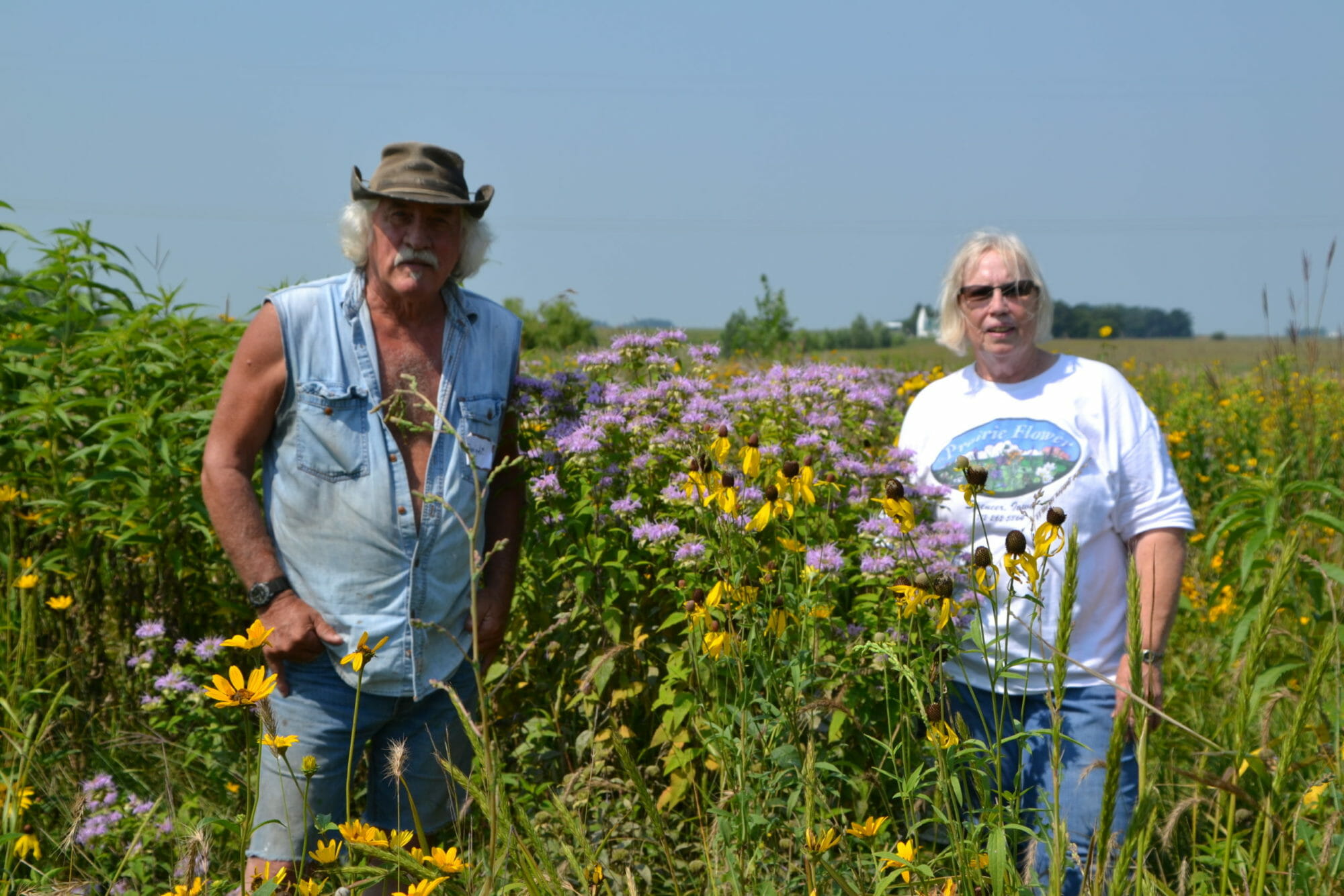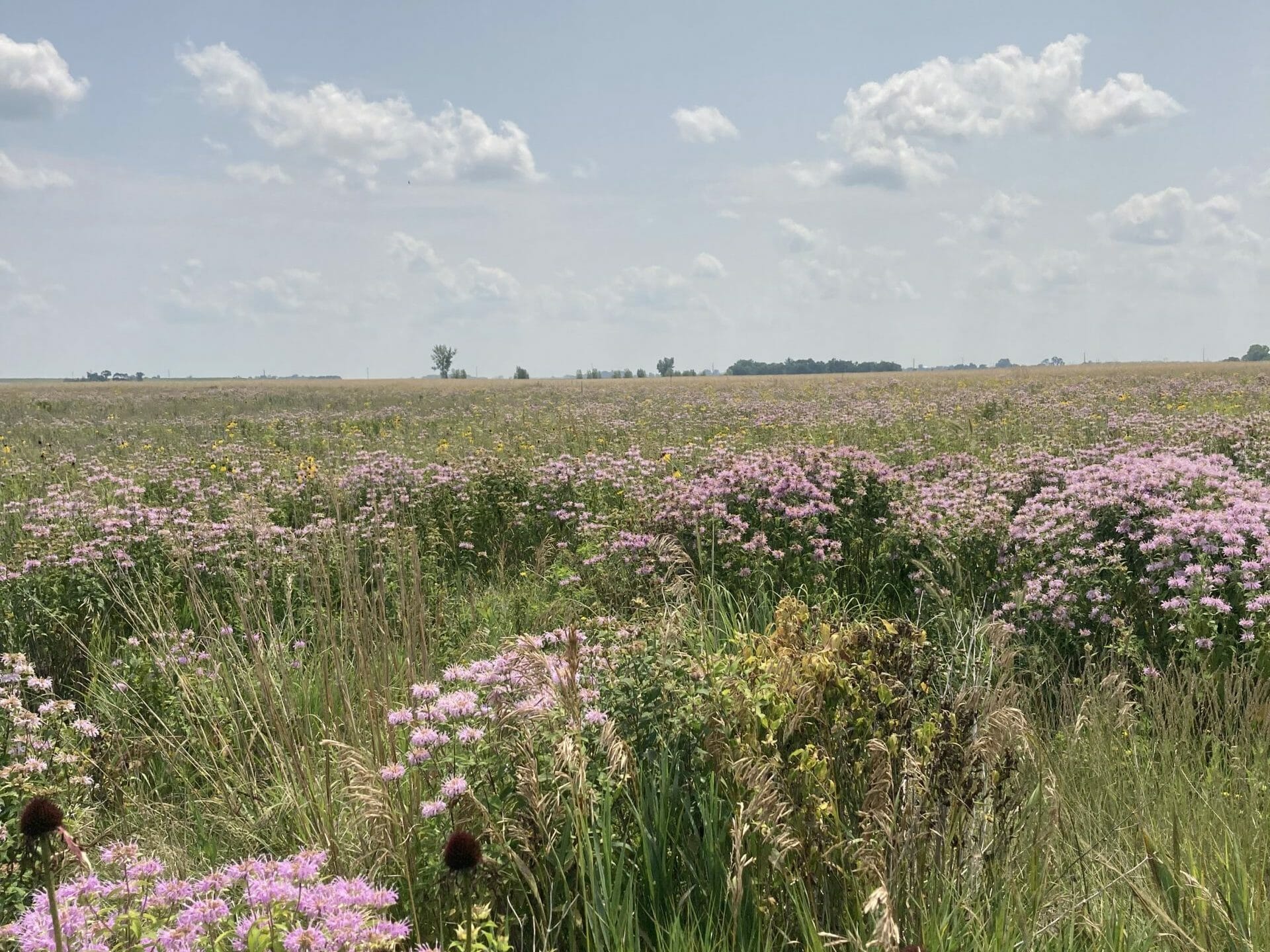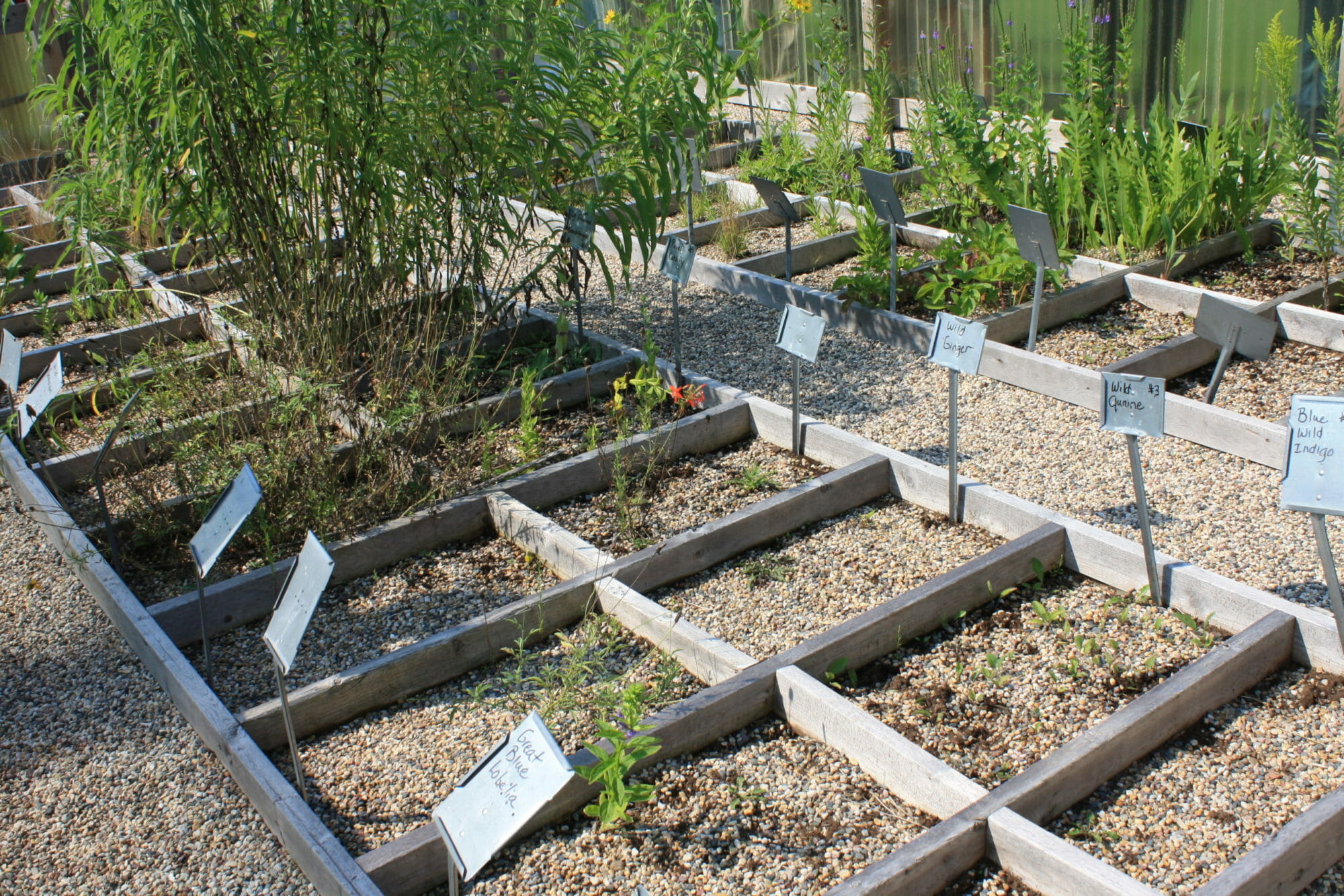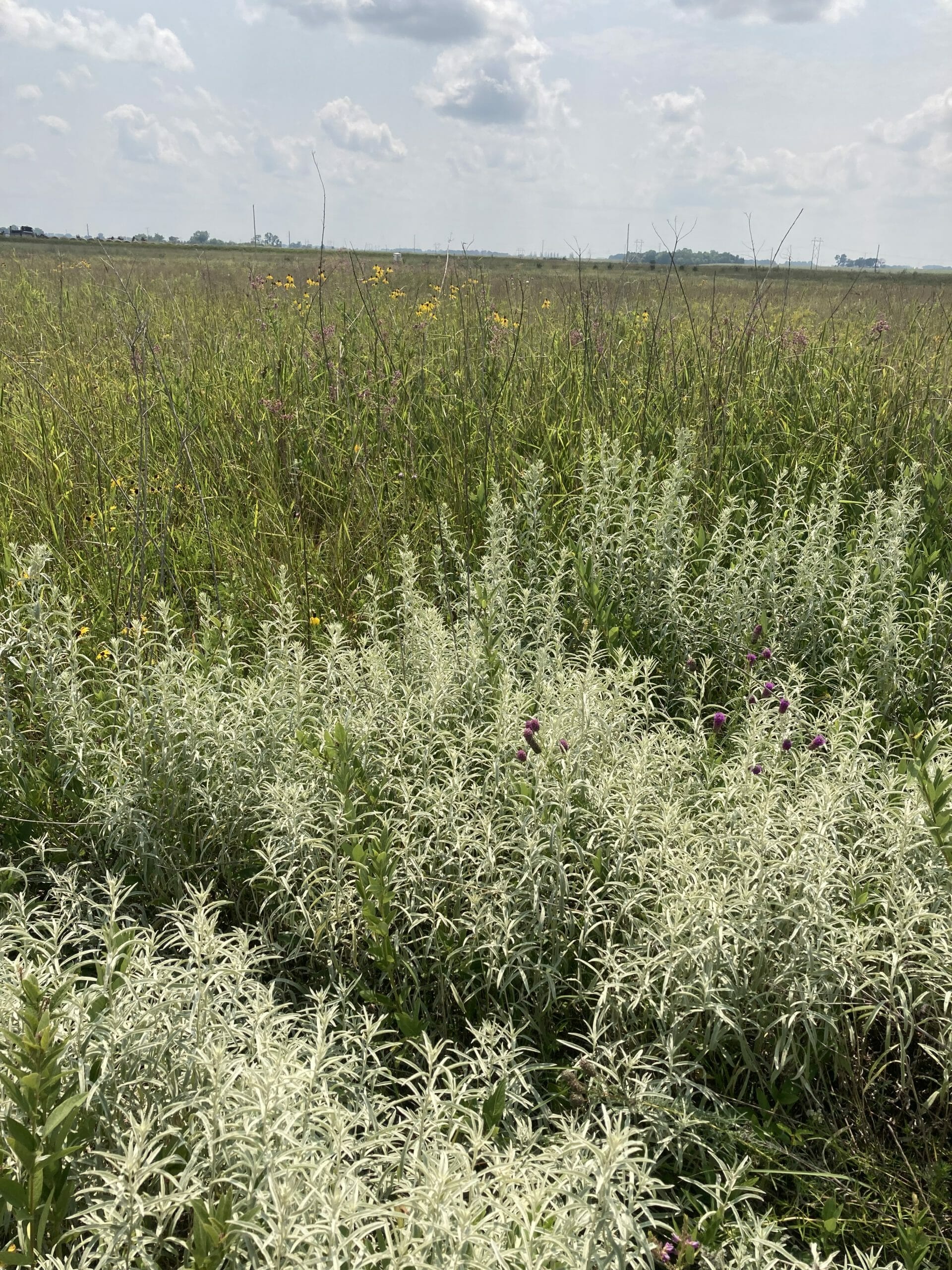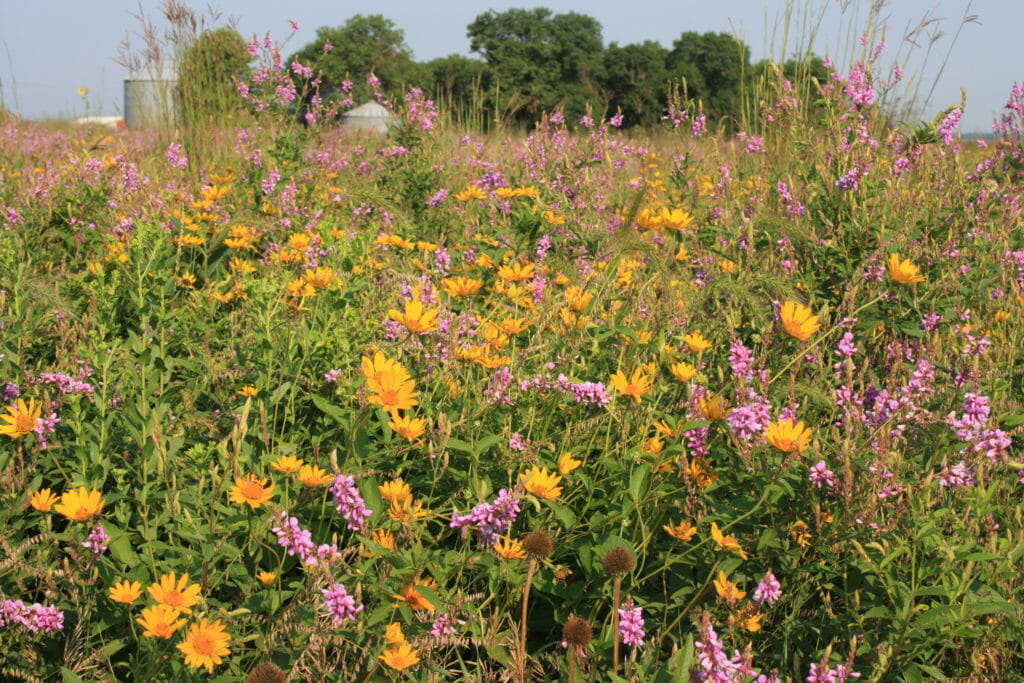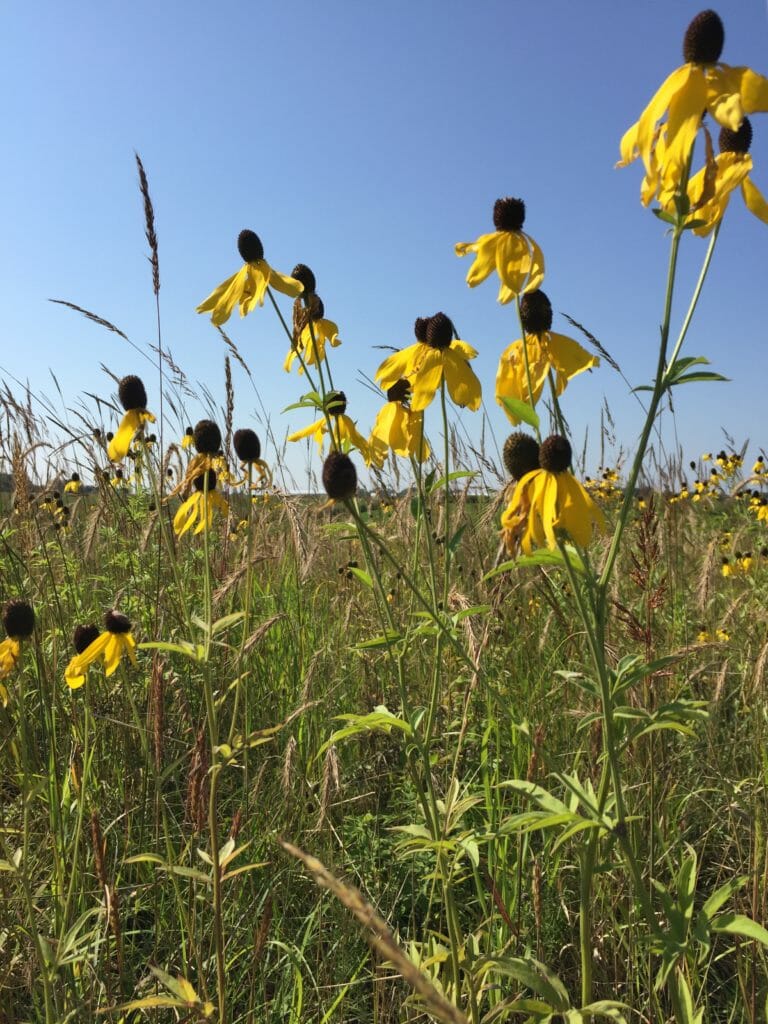An Interview with Dwight and Bev Rutter of The Prairie Flower
Recently, I made the drive from Ames to Spencer, Iowa to visit The Prairie Flower, owned by Dwight and Bev Rutter. The Prairie Flower is home to 580 acres of native plants, grasses, and wetlands. Most of this land has been turned into seed and sold to establish more prairie across the state. As part of my visit, I interviewed Bev and Dwight about their operation.
- First tell me about yourself and your operation.
Bev: This is a hobby gone nuts. We grow 580 acres of native plants and grasses, with some land in [the Conservation Reserve Program]. We have a restored wetland and a native prairie as well. We sell seed and plants, and we used to install CRP acres but we quit that three years ago.
- How many species do you suppose you have?
Dwight: It’s at least 80 different species. We don’t collect all those, but that’s what grows.
- What makes prairie important? Important to you?
Bev: Prairie is good for the land and for water conservation. Plus, we just like it. It’s good for birds and insects and good for habitat. We don’t have to use any chemicals, which makes it even better.
- Walk me through the process of creating your seeds and mixes, please. Do you have transplants too? How much seed are you able to collect in a year?
Bev: Every year the seed harvest is weather-dependent. If it’s wetland it’s a different deal, as some things may not show up at all. It’s the same with the other parts. We have a big monoculture of purple coneflowers in one section. Most of the time, you don’t know until you harvest and it doesn’t work out. Some things we don’t harvest because they’re not worth much: for example, Black-eyed Susans are pretty cheap so we don’t mess with those. It’s whatever Dwight can harvest easily by himself. He also cleans all the seed. That’s his baby. He likes that hot sweaty stuff that I don’t like. We also have plants we sell in the spring. Sometimes we get 50lb of one thing and sometimes we get 10lb. I suspect there’ll be lots less this year (with the lack of rain).
- With your custom seed mixes, how much are you in contact with the person planting?
Bev: I’m in contact a lot. When we did the CRP I would talk to farmers and NRCS all the time. Now we just do some standard mixes, or if there’s someone in town. You tell them what seed’s in the mix and the maintenance. I’m in contact with the buyer a lot for custom mixes because it’s something different, otherwise I put all the same thing in it.
- At your 2018 Field Day, you mentioned creating ponds and wetlands to support your prairie. Tell me more about that!
Bev: Currently, the ponds are pretty dry. We have seven ponds, as [Dwight] likes to impound water to benefit a lot of different wildlife. Migrating waterfowl used to stop here a lot, but this year there’s not much to stop by. The Little Sioux river runs through here, so we have beavers, and we have a [mussel] bed/nursery to keep the [mussels]. We’ve seen five different kinds of [mussels], and while some spots don’t have any at all, we continue to have [mussels]. We’re in a drought right now, and this is sandy soil anyway, so there’s not much pond.
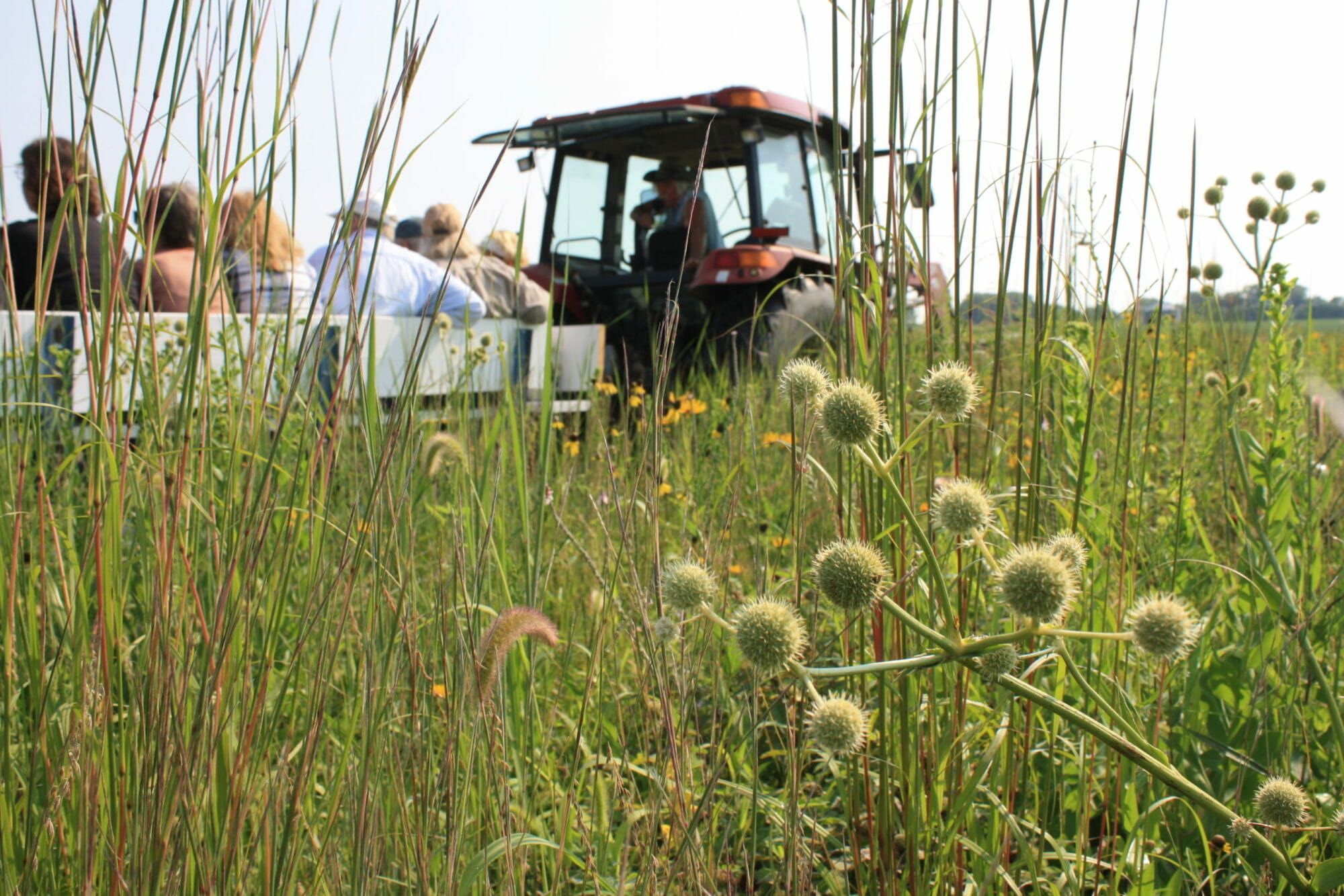
Attendees at the Rutter’s 2018 Field Day roll past some Eryngium yuccifolium (rattlesnake master) while exploring the prairie.
- Have you noticed an increase in prairie acreage across the state since you started your business?
Bev: Absolutely. We were way ahead of our time when we started. Okoboji has gotten conscious about bank erosion, and added more native plants in places. These plants have deep roots and an easy care regimen, and they’re all perennials.
When we first started our customers were planting CRP, now our customer base is people looking for plants and seed for smaller areas. For the canal at Wahpeton, for example, they needed a 3-4 foot buffer around bank and along the lakeshore. They used wetland plants, enhancing wetland areas with wetland plants. They found out the geese won’t come into an area with native plants (and the town wanted fewer geese around). We’ve done a lot of work like that. Some people are very conscious about prairie restoration, and others could care less, but there’s lots more than there used to be. We’ve also done a lot of work with rain gardens and bio-retention cells.
- Have you also seen wildlife and insect increases? What about monarchs? Pollinators?
Bev: Yes, there have been more monarchs than we’ve seen for a couple of years. We’ve seen more bumblebees, wildlife in general, and lots of great birds. There have also been bobolinks, most people who don’t have grassland don’t get bobolinks.
-
What are your nearby remnants?
Dwight: We have Maury prairie nearby, that’s 60 acres.
- What advice do you have for someone wanting to plant prairie?
Bev: Hurry! Actually, a prairie takes patience. People start with good intentions and by the second year they’ve had enough and plow it up. It takes at least three years for [prairie] to look good. It also takes a lot of maintenance for it to look good. By years 3 to 5 the prairie starts looking gorgeous. A lot of people just don’t have the patience to get there.
- Your business is called The Prairie Flower, so I must ask: what’s your favorite prairie flower?
Bev: I have so many! They’re all gorgeous, it’s hard for me to pick. Every season has something different, in the fall it’s asters, spring its Black-Eyed Susan’s. Butterfly milkweed is also one of my favorites.
This material is based on work supported by the U.S. Department of Agriculture, under agreement number NR196114XXXXG003.
Any opinions, findings, conclusions, or recommendations expressed in this publication are those of the the author(s) and do not necessarily reflect the the views of the U.S. Department of Agriculture. In addition, any reference to specific brands or types of products or services do not constitute or imply endorsement by the U.S. Department of Agriculture.

